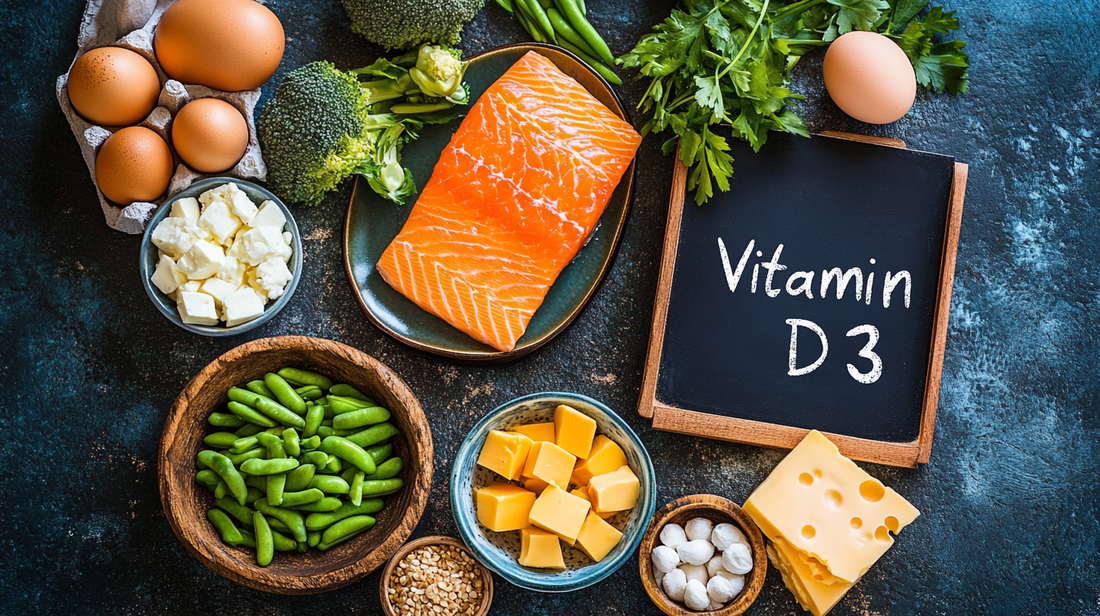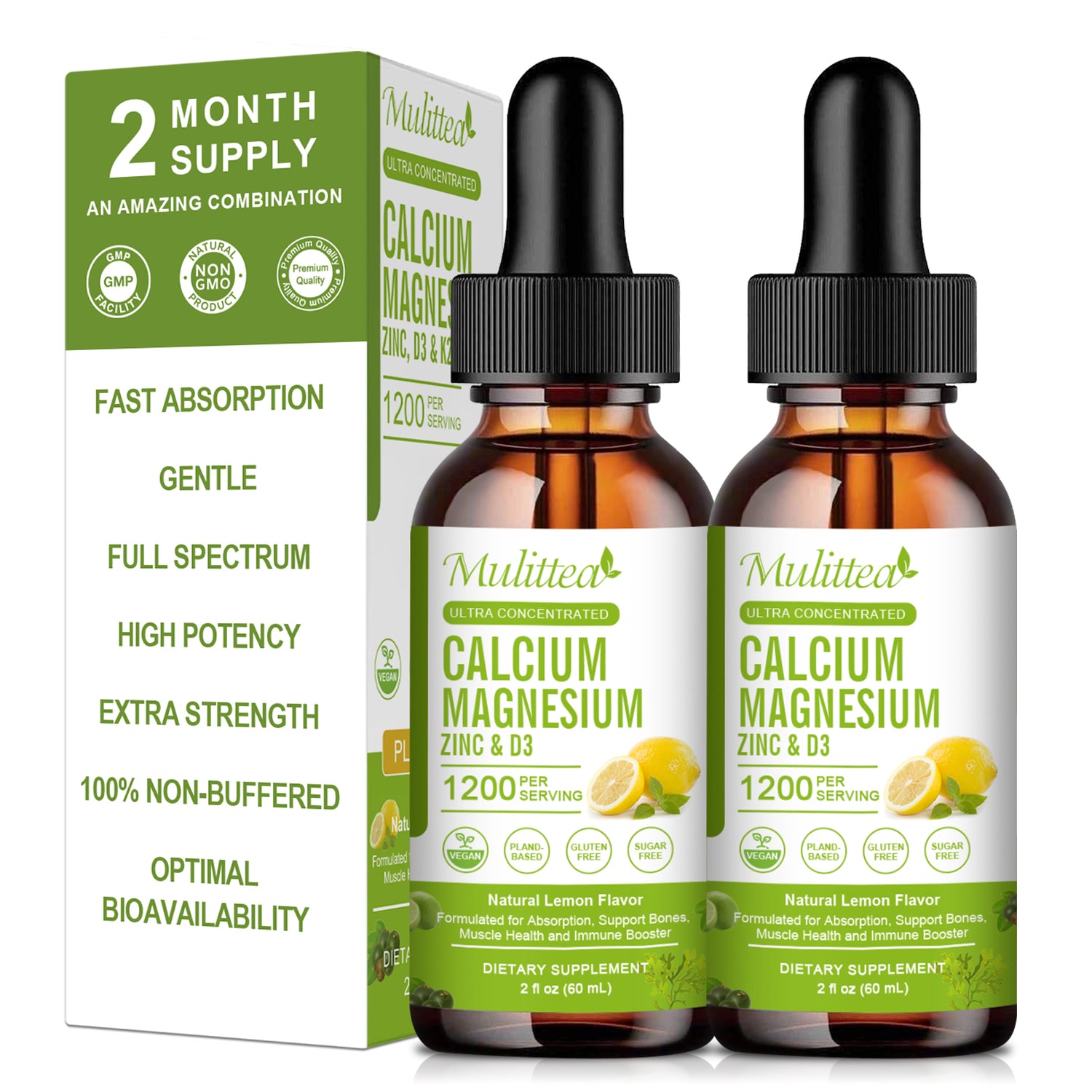
Top 10 Natural Sources of Vitamin D3 You Should Include in Your Diet
Share
Vitamin D3, also known as cholecalciferol, is crucial in maintaining bone health, supporting immune function, and enhancing overall well-being. The fat-soluble vitamin helps your body absorb calcium, a mineral necessary for strong bones and teeth. A deficiency in Vitamin D3 can lead to a variety of health issues, including weakened bones, osteoporosis, and an increased risk of chronic diseases.
While supplements are a common way to address this deficiency, natural food sources of Vitamin D3 are a great option to ensure you’re getting adequate levels. Here are 10 natural sources of Vitamin D3 that should be included in your diet for better bone health and overall vitality.
1. Fatty Fish: A Rich Source of Vitamin D3
Fatty fish are some of the richest natural sources of Vitamin D3. Fish such as salmon, mackerel, and sardines are packed with this essential vitamin. A 3-ounce serving of cooked salmon contains approximately 570 IU (international units) of Vitamin D, far exceeding the recommended daily intake for most adults.
Benefits of Fatty Fish
Fatty fish provide high-quality protein and healthy omega-3 fatty acids, which further promote heart health. They also help reduce inflammation and protect against chronic diseases. Including fatty fish in your diet supports not only bone health but also cardiovascular and immune system function.
How to Include It in Your Diet
You can enjoy fatty fish grilled, baked, or in salads. For convenience, canned salmon or sardines can be added to sandwiches or pasta dishes, making them an easy and quick option.
2. Cod Liver Oil: The Ultimate Natural Source
Cod liver oil is often considered the ultimate natural source of Vitamin D3. Just one tablespoon of cod liver oil can contain up to 1,360 IU of Vitamin D3, which is more than the daily recommended intake for most people.
Benefits of Cod Liver Oil
Cod liver oil has long been associated with bone health and immunity. It is rich not only in Vitamin D3 but also in Omega-3 fatty acids, which are beneficial for reducing inflammation and improving joint health. It is also widely used as a supplement for those looking to improve skin health and support heart function.
How to Include It in Your Diet
While cod liver oil is available in capsule form, it can also be consumed directly from the spoon. Many people incorporate it into smoothies or even drizzle it over salads for an extra boost.
3. Egg Yolks: A Convenient Source of Vitamin D3
Eggs, particularly egg yolks, are an excellent source of Vitamin D3. A single large egg yolk contains about 40 IU of Vitamin D3, providing a smaller but still valuable contribution to your daily intake.
Benefits of Egg Yolks
Egg yolks also offer high-quality protein, healthy fats, and essential vitamins like B12 and choline. Consuming eggs in moderation as part of a balanced diet supports brain health, muscle function, and cardiovascular health.
How to Include Them in Your Diet
Eggs are incredibly versatile. You can enjoy them scrambled, poached, boiled, or as part of omelets and frittatas. For a heart-healthy breakfast, consider pairing eggs with whole-grain toast or avocado.
4. Beef Liver: A Powerhouse of Vitamin D3
Beef liver is a nutrient-dense food packed with Vitamin D3. Just 3 ounces of cooked beef liver contains around 50 IU of Vitamin D3, along with other vital nutrients like iron, vitamin A, and B vitamins.
Benefits of Beef Liver
Consuming beef liver is an excellent way to boost your intake of Vitamin D3 and iron. Iron is essential for red blood cell production and the prevention of anemia, making beef liver a great food for energy and vitality.
How to Include It in Your Diet
Beef liver can be sautéed, grilled, or incorporated into dishes like pâté or liver and onions. Though the flavor may not be for everyone, cooking it with spices and herbs can help mask its strong taste.
5. Mushrooms (UV-Exposed): A Plant-Based Option
Mushrooms, specifically those exposed to ultraviolet (UV) light, are unique in that they can produce Vitamin D3. UV-exposed mushrooms like maitake and shiitake are the most significant plant-based sources of Vitamin D3.
Benefits of UV-Exposed Mushrooms
These mushrooms are a great option for vegetarians and vegans who may struggle to get enough Vitamin D3. They also provide fiber, antioxidants, and other nutrients that support the immune system and digestive health.
How to Include Them in Your Diet
You can enjoy mushrooms in soups, stir-fries, salads, or as a topping on pizza. When buying mushrooms, look for varieties labeled as “UV-exposed” for the highest Vitamin D3 content.
6. Fortified Foods: A Practical Way to Boost Intake
Certain foods are fortified with Vitamin D3 to help those who may not get enough from natural sources. Common fortified foods include milk, orange juice, cereal, and plant-based milk like soy or almond milk.
Benefits of Fortified Foods
Fortified foods are an easy way to increase your Vitamin D3 intake, especially for people with dietary restrictions. For example, plant-based milk fortified with Vitamin D3 is an excellent option for vegans and lactose-intolerant individuals.
How to Include Them in Your Diet
Look for fortified foods in your local grocery store and incorporate them into your meals and snacks. Adding fortified milk to your coffee or cereal in the morning is a great way to get your Vitamin D3 boost.
7. Canned Tuna: A Convenient Source of Vitamin D3
Canned tuna is a convenient and affordable source of Vitamin D3. A 3-ounce serving of canned tuna packed in oil provides about 154 IU of Vitamin D3. It’s also high in protein, omega-3 fatty acids, and several essential minerals like selenium.
Benefits of Canned Tuna
Tuna is a healthy, low-calorie source of Vitamin D3 and protein. It supports bone health, muscle maintenance, and overall vitality, making it a great addition to a balanced diet.
How to Include It in Your Diet
Canned tuna can be used in a variety of dishes, including salads, sandwiches, wraps, and pasta dishes. Try mixing it with vegetables and a light dressing for a nutritious lunch.
8. Cheese: A Tasty Vitamin D3 Booster
Cheese, particularly hard cheeses like Swiss, cheddar, and gouda, are good sources of Vitamin D3. Just one ounce of Swiss cheese contains about 44 IU of Vitamin D3.
Benefits of Cheese
Cheese provides calcium, protein, and healthy fats, which support bone health and muscle function. It also offers a rich taste that can complement a variety of meals.
How to Include It in Your Diet
Cheese can be enjoyed as a snack, added to sandwiches, or incorporated into dishes like pasta and casseroles. For a healthy snack, pair cheese with fruits like apples or grapes.
9. Yogurt: A Probiotic and Vitamin D3 Power Combo
Yogurt is a great source of probiotics, which promote gut health, and also provides Vitamin D3. A serving of fortified yogurt can offer anywhere from 80 to 100 IU of Vitamin D3.
Benefits of Yogurt
Yogurt supports bone health with its Vitamin D3 content and promotes digestive health with its probiotics. It is also a good source of protein, calcium, and B vitamins.
How to Include It in Your Diet
Enjoy yogurt on its own or mix it with fresh fruit, nuts, or granola for a delicious, nutrient-packed breakfast or snack.

10. Tofu and Fortified Plant Milks: Vegan-Friendly Vitamin D3 Options
For vegans and vegetarians, tofu and fortified plant milk are great sources of Vitamin D3. Many brands of soy, almond, and oat milk are fortified with Vitamin D3, and tofu made from soybeans contains small amounts of this essential nutrient.
Benefits of Tofu and Plant Milk
These plant-based foods help vegans and vegetarians maintain adequate levels of Vitamin D3 while also providing protein, fiber, and other essential nutrients.
How to Include Them in Your Diet
Tofu can be stir-fried, grilled, or added to soups and salads. Fortified plant milk can be enjoyed in smoothies, coffee, or on its own as a refreshing drink.
Conclusion
Getting enough Vitamin D3 is essential for maintaining strong bones and overall health. While supplements are helpful, incorporating these 10 natural sources into your diet is a fantastic way to ensure you’re supporting your body with the nutrients it needs. Whether through fatty fish, egg yolks, or plant-based options like fortified milk, there are plenty of ways to boost your Vitamin D3 intake. Make sure to enjoy a variety of these foods to maximize your bone health and overall vitality!
References
l "Vitamin D and Bone Health." National Institutes of Health, U.S. Department of Health and Human Services, www.nih.gov.
l Holick, Michael F. "Vitamin D: A D-Lightful Health Perspective." Nutrients, vol. 5, no. 9, 2013, pp. 2843-2879. MDPI, doi:10.3390/nu5092843.
l "Dietary Sources of Vitamin D." Harvard T.H. Chan School of Public Health, www.hsph.harvard.edu.

